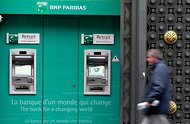The cuts were an effort to reach profitability in a division that has failed to gain traction with consumers and has suffered huge losses financially. Patch’s troubles have been a source of frustration for AOL’s chief executive, Tim Armstrong, who helped found the service in 2007 when he was an executive at Google. Shortly after arriving at AOL in 2009, Mr. Armstrong had the company acquire Patch.
Patch’s idea is to provide an online network of local news sites, filling the gap in coverage left by newspapers that have either closed or greatly scaled back their investment in reporting in response to declines in advertising revenue.
The company said it had analyzed the performance of the approximately 900 Patch sites and identified about 60 percent as high-performing ones that should remain intact. AOL said it would look for partners to operate 20 percent of the sites that are considered viable, and it would close or consolidate the rest. At its current staffing, Patch has more than 1,000 employees.
“Patch’s strategy will be to focus resources against core sites and partner in sites that need additional resources,” AOL said in a statement. “Additionally, there are sites that we will be consolidating or closing.”
The statement added: “Patch has become an important brand across many towns in America. The Patch team across the country has served and will continue to serve communities with journalism and technology platforms. Unfortunately, with these changes we are announcing today, we will be reducing a substantial number of Patch positions.”
Some investors, skeptical that Patch can succeed, have urged AOL to dump the service altogether. The company has told analysts that it expects Patch to be profitable by the fourth quarter of this year.
Mr. Armstrong has said he is confident in Patch’s potential. The company says that the service has 3.5 million newsletter subscribers and 4.7 million registered users, increases of 138 percent and 181 percent in a year-over-year comparison. It says that between April and June, Patch had a 10 percent increase in traffic compared with the same period in 2012.
Patch’s troubles were the backdrop for an embarrassing episode for Mr. Armstrong last week. During a conference call with Patch employees, he became angry with an executive who was videotaping the proceedings and fired him on the spot, as employees listened. He apologized on Tuesday for the manner of the firing.

Article source: http://www.nytimes.com/2013/08/17/business/media/aol-to-cut-up-to-500-jobs-at-local-news-service.html?partner=rss&emc=rss
